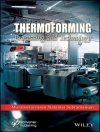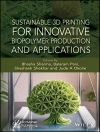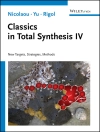Selenium-based methods in synthetic chemistry have developed rapidly over the past years and are now offering highly useful tools for organic synthesis. Filling the gap for a comprehensive handbook and ready reference, this book covers all modern developments within
the field, including biochemical aspects. The chemistry chapters are organized according to the different reactivities of various selenium
compounds and reagents, with each chapter dealing with a special reaction type.
Also includes a table with 77Se NMR shifts to aid in practical problems.
From the Contents:
* Electrophilic and Nucleophilic Selenium
* Selenium Compounds in Radical Reactions
* Selenium-Stabilized Carbanions
* Selenium Compounds with Valency Higher than Two
* Selenocarbonyls
* Selenoxide Elimination and [2, 3]-Sigmatropic Rearrangement
* Selenium Compounds as Ligands and Catalysts
* Biological and Biochemical Aspects of Selenium Compounds
Tabela de Conteúdo
Preface
ELECTROPHILIC SELENIUM
General Introduction
Addition Reactions to Double Bonds
Selenocyclizations
NUCLEOPHILIC SELENIUM
Introduction
Properties of Selenols and Selenolates
Inorganic Nucleophilic Selenium Reagents
Organic Nucleophilic Selenium Reagents
SELENIUM COMPOUNDS IN RADICAL REACTIONS
Homolytic Substitution at Selenium to Generate Radical Precursors
Selenide Building Blocks
Solid-Phase Synthesis
Selenide Precursors in Radical Domino Reactions
Homolytic Substitution at Selenium for the Synthesis of Se-Containing Products
Seleno Group Transfer onto Alkenes and Alkynes
Ph Se H in Radical Reactions
Selenium Radical Anions, Srn1 Substitutions
SELENIUM-STABILIZED CARBANIONS
Introduction
Preparation of Selenium-Stabilized Carbanions
Reactivity of the Selenium-Stabilized Carbanions with Electrophiles and Synthetic Transformations of the Products
Stereochemical Aspects
Application of Selenium-Stabilized Carbanions in Total Synthesis
Conclusion
SELENIUM COMPOUNDS WITH VALENCY HIGHER THAN TWO
Introduction
Trivalent, Dicoordinated Selenonium Salts
Trivalent, Tricoordinated Derivatives
Tetravalent, Dicoordinated Derivatives
Tetravalent, Tricoordinated Derivatives
Pentavalent Derivatives
Hexavalent, Tetracoordinated Derivatives
Hypervalent Derivatives
SELENOCARBONYLS
Overview
Theoretical Aspects of Selenocarbonyls
Molecular Structure of Selenocarbonyls
Synthetic Procedures of Selenocarbonyls
Manipulation of Selenocarbonyls
Metal Complexes of Selenocarbonyls
Future Aspects
SELENOXIDE ELIMINATION AND [2, 3]-SIGMATROPIC REARRANGEMENT
Introduction
Preparation and Properties of Chiral Selenoxides
Selenoxide Elimination
[2, 3]-Sigmatropic Rearrangement via Allylic Selenoxides
[2, 3]-Sigmatropic Rearrangement via Allylic Selenimides
[2, 3]-Sigmatropic Rearrangement via Allylic Selenium Ylides
Summary
SELENIUM COMPOUNDS AS LIGANDS AND CATALYSTS
Introduction
Selenium-Catalyzed Reactions
BIOLOGICAL AND BIOCHEMICAL ASPECTS OF SELENIUM COMPOUNDS
Introduction
Biological Importance of Selenium
Selenocysteine: The 21st Amino Acid
Biosynthesis of Selenocysteine
Chemical Synthesis of Selenocysteine
Chemical Synthesis of Sec-Containing Proteins and Peptides
Selenoenzymes
Summary
Sobre o autor
Thomas Wirth is professor of organic chemistry at Cardiff University. After studying chemistry in Bonn and at the Technical University of Berlin, he obtained his Ph D in 1992 with Professor S. Blechert. After a postdoctoral stay with Professor K. Fuji at Kyoto University a JSPS fellow, he started his independent research at the University of Basel (Switzerland). In the group of Professor B. Giese he obtained his habilitation
on stereoselective oxidation reactions supported by various scholarships before taking up his current position at Cardiff University in 2000. He was invited as a visiting professor to a number of places including the University of Toronto/Canada (1999), Chuo University in Tokyo/Japan (2000), and Osaka University/Japan (2004) and was awarded the Werner-Prize from the New Swiss Chemical Society (2000). His main
interests of research concern stereoselective electrophilic reactions, oxidative transformations with hypervalent iodine reagents including mechanistic investigations and organic synthesis performed in microreactors.












